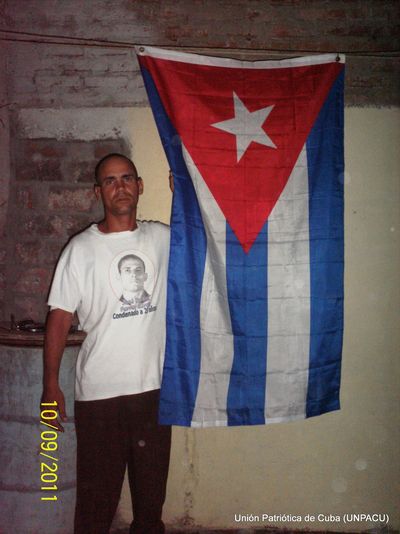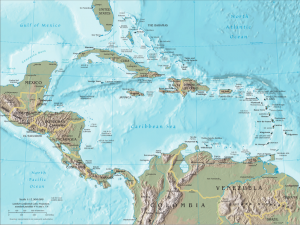Cuba’s silence on cholera dangerous to your health
http://www.miamiherald.com/2013/08/17/3567587/cubas-silence-on-cholera-dangerous.html
BY SHERRI L. PORCELAIN
SPorcela@med.miami.edu
Posted 08/17/2013
After a century hiatus, cholera has returned to Cuba. Along with the re-emergence of dengue, a mosquito-born disease, both the local population and tourists visiting the island remain at risk today. This is no surprise since Cuba’s deteriorated water, sewage, sanitation and housing systems all create the ideal environment for rapid disease spread.
Luis Suarez Rosas, a physician with Cuba’s National School of Medicine, captures the paradox of Cuban healthcare today in using the term “epidemiologic silence” to describe Cuba’s official position on reporting disease outbreak information.
Cuba is a unique case study because of its long history of highly trained infectious disease specialists from the yellow fever response in the early 1900s to the prominence of the Pedro Kouri Tropical Medicine Institute founded in 1937. Yet, today, the policy to call dengue euphemistically as a febrile illness or cholera as a gastrointestinal illness represents an unethical national public health policy affecting individuals beyond their national borders.
This choice to withhold good epidemiologic data derails global public health goals to inform and protect travelers; it also encourages rumors and creates confusion.
In June 2013 an independent journalist from Hablemos Press reported approximately 30 cases of malaria in Cuba. The Cuban government claimed these cases are imported by tourists or from returning residents who traveled to an endemic area. While imported cases of malaria are not new, the history of Cuba’s denials of other re-emerging diseases compels one to question the veracity of the government’s official report.
Malaria expert John Beier, Professor of Public Health Sciences at the University of Miami Miller School of Medicine, states that “Cuba is receptive to malaria since the mosquito has not been eliminated. It is also important to acknowledge that local pockets of transmissions can exist through imported cases from other areas in the region, such as Hispaniola where malaria is known to exist.” During rainy season, and when vector population increases, the risk of transmission increases as well. Still no official government report exists.
Cuba’s governmental policy to withhold information for the purpose of protecting the country’s health image, or its tourism industry, is unacceptable in an era where rapid and frequent transport across borders occurs. International travelers and concerned citizens everywhere must realize that microbes and mosquitoes do not require their own passport stamp for entry into the United States, and the intrepid stowaways may arrive before their presence is detected.
Based upon what we know and don’t know, we need to:
• Promote greater awareness about mosquito avoidance and cholera prevention for travelers to Cuba. While other countries may have higher reported cases, their risk is documented through transparency in their reporting. On June 27, 2013 the U.S. Interests Section in Havana posted an alert message for U.S. citizens regarding road safety and traffic deaths and injuries. This is an important health and safety message, so why not extend this to other public health issues?
• Consider the use of Rapid Diagnostic Kits (RDK) for early identification of such diseases as dengue and malaria. This could be especially important to U.S. travel medicine clinics where licensed and trained health professionals have the ability to do accurate testing and patient histories.
Dr. Kunjana Mavunda, medical director and tropical disease specialists at International Travel Clinic in South Miami, supports this approach. “I’ve been looking at these rapid diagnostic kits as part of the patient care, and it is important that you get a good history of the patient and identify potential exposure risks.” She indicated that Cuba’s neglected infrastructure makes it ripe for potential disease spread.
• Generate a wider dialogue concerning Cuba’s epidemiologic silence. Will anyone hold the Cuban government accountable for its failure to report an early outbreak of an infectious disease?
Global health security depends upon the rigor of good science, the willingness of nations to uphold policies to protect both their citizens and visitors, and the timely reporting of potential health threats. A world that is forced to rely on rumors puts everyone at risk. Consequently, silence is dangerous to your health.
Sherri L. Porcelain is a senior lecturer in global public health in world affairs and a senior research associate at the Institute for Cuban and Cuban-American Studies, University of Miami.
The regime insists that the tourists are fine because they all can have bottle water. But, what about the Cuban people? The city of Havana, with a population that more than double the one in 1958, still depends of water and sewer systems that are over 75 years old.
Among many other problems affecting the population is the state of neglect of aqueducts that cause large amounts of water losses. Estimates by the Cuban National Institute of Water Resources (INRH) is that “4,000 km of aqueduct distributions lines, equivalent to 37% of the network, are in great need of repair. Because of this near to two million people, mostly in Havana, are afflicted with water shortage.”
The Castro brothers and his “expert” didn’t have to reinvent the wheel to expand the distribution system and repair the leakage of the existing infrastructure. Not only are they incapable of producing and creating, but neither can they successfully copy or learn from designs and longstanding technologies and operating experiences.











 - By wat0n
- By wat0n - By JohnRawls
- By JohnRawls - By Tainari88
- By Tainari88